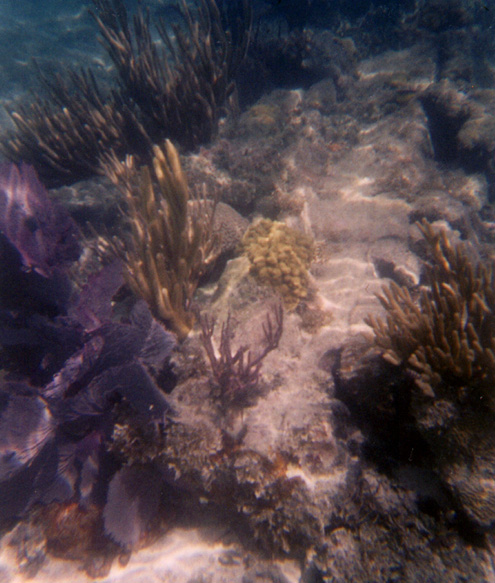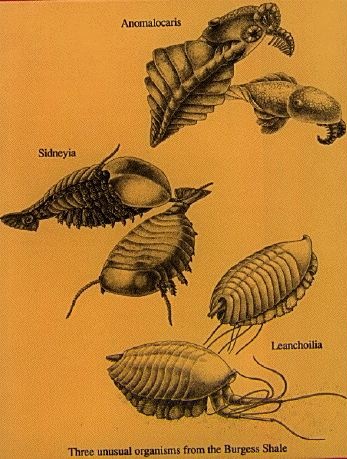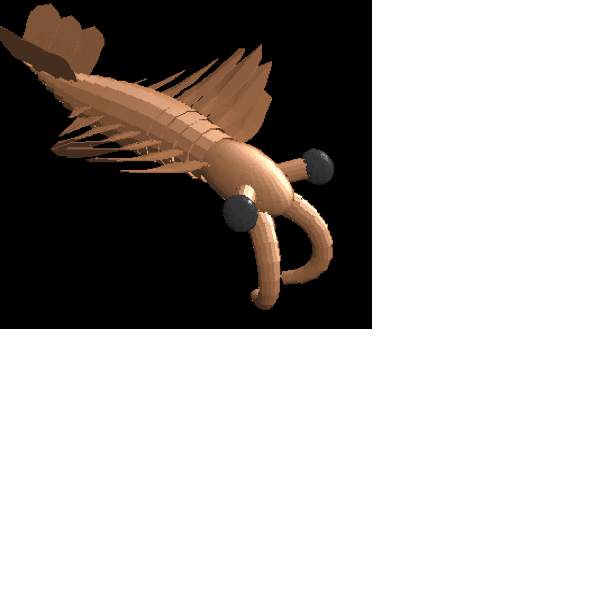![]() Lynn Margulis,
Lynn Margulis,![]()
[ A New Look at Evolution ], (New
York, Basic Books, 1998).![]()
3 Individuality by incorporation
7 Ashore
8 Gaia
"As a species we cling to the familiar comforting conformities of the mainstream. However,'convention' penetrates more deeply then we tend to admit. Even if we lack a proper name for and knowledge of the history of any specific philosophy or thought style, all of us are embedded in our own safe 'reality.' Our outlooks shape what we see and how we know. Any idea we conceive as fact of truth is integrated into an entire style of thought, of which we are usually unaware."
Pp. 2-3.
Is symbiosis everywhere?
"Call the cultural constraints 'trained incapacities,' thought collectives,'social constructions of reality.' "
p. 3.
These constraints or limitations are powerful biases that shape our understanding of who we are, what we are doing, where we are and how nature works.
"Like those of everyone else, the scientists hidden assumption
affect his or her behavior, unwittingly directing thought."
p. 3.

Symbiosis, "our lack of awareness of its prevalence."
"symbionts are not obvious, but they are omnipresent"
"we are symbionts on a symbiotic planet."
"Physical contact is a nonnegotiable requisite."
p. 5.
Ivan E., Wallin, he believed that "new species arise though
symbiosis."
Symbiogenesis
fruit flies bread in progressively warmer temperatures, eventually
became distinct form the parent or originating species.
p. 7
"That turned out to have something to do with a parasite." !
"Symbioses are like flashes of evolutionary lightening."
8
Platymonas, single celled green algae in worms on the coast of France, Brittany
9
"we animals, all thirty million species of us, emanate from the microcosm. The microbial world, the source and well spring of soil and air, informs our own survival."
10
chlorella, Ophrydium balls of jelly embedding green chlorella algae
Kefir is symbiotic -- 25 different kinds of bacteria and yeast
2 : Against Orthodoxy
13
Margulis recalls her Collegiate training by
saying:
"I adored Crow's general genetics course: it changed my life."
The superb science of the University of Chicago...
"Human and other animal consciousness, as well as other types of biological beauty and complexity are properties of our coevolving, pointillist bacterial ancestry."
"cellular inter-living,... produced everything from spring-green blooms, to warm, wet mammalian bodies..."
p. 20.
"All beings alive today are equally evolved."
p. 20.
"The findings of the importance of symbiosis in evolution have forced us to revise the earlier nucleocentric view of evolution as a bloody struggle of animals.
pp. 19-20.
"...symbiosis, beginning as an uneasy alliance of distinct life-forms, may underlie the origin of major evolutionary novelty."
p. 20.
"The genes in other words are not necessarily in the nucleus."
"the mitochondria contain their own genes."
p. 22.
We were taught how, through science, we could go about to answering important philosophical questions."
"a set of methods that are honest, open, accessible, and energetic seems hardly to exist in the 'technological fix' mentality of today."
23
"Realization that the emphasis on connecting genetics to chemistry had unnecessarily given scientists too narrow a perspective , one overly focused on the nucleus, was my jumping off point."
25
plastids and mitochondria apparently had there own peculiar genes outside of the cell nucleus.
25
"Genetics ... Still seemed to me to be the key to evolutionary history."
27
hard to distinguish blue green bacterium embedded in sells and chloroplasts, based on function and behavior.
SET Serial endosymbiosis theory and Symbiogenesis : complex cells, the eukaryots of which we are made --were produced by symbiosis among primary bacterial forms.
p.29
SET Serial endosymbiosis Theory.
p. 31
3 : Individuality by incorporation.
Symbiosis
coined in 1873, by German botanist, Anton deBary, living together of very different kinds of organisms.
p. 33.
Sym + biosis
[Latin:
with + living] ; living with or living together, coexisting on shared resources.
Specifically: the existence of two distinct species of organisms in such
a manner that the genetic success of one is tied to the genetic success of the
other.
examples
type of Being producing species consuming species
lichens algae + fungus
corals zooxanthelae algae + animal polyp
legumes cyanobacter root nodules + plants
rhododendron mycorrhizae fungus + forest trees (plants)
termites gut bacteria + other gut bacteria
Not a special case in biology but an obvious successful pattern.
Question: Did bacteria build plants, animals and fungus in order to best survive extreme conditions, competition for scarce resources, or to establish new territories in which to thrive?
Spirochetes become undulipodia (motile bacteria become an organelle to move cytoplasm)
p. 35.
Cyanobacteria are relatives of chloroplast
p. 36.
mitochondria are relatives of oxygen breathing bacteria
p. 38.
4 : The name of the Vine
"names of living beings seem harmless enough."
taxonomy defined
as a means of classification for the overwhelming number of different
organisms.
51
Gregory Bateson "THE MAP IS NOT THE TERRITORY."
"...such trees are idealized representations of the past. In reality the tree of life often grows in on itself."
Anastomosis, branches forming nets"
52
Ivan Wllin's 1920s suggestion that chloroplasts and mitochondria
"originated as symbiotic bacteria." 
53
17th century origin of bacteria as an identifiable group, classified as "animalcules"
"Language can confuse and deceive."
55
"Most bacteria a no more harmful than air..."
Wallins' colleagues confused the map with the territory."
55
The idea of plants, animals, and germs "this idea is as dangerous as it is prevalent"
56
Ernst Haeckel added protists to van Leeuwenhoek's animalcules
57
Linnean system, late 1700s,
58
Haeckel's championing of evolution
established Monera as the phyla for radiolarians and foraminiferans
59-60
Herbert Copeland
took the term (1860) "protictista" from Ernst Haeckel and in 1956 subdivided the
Monera kingdom dividing microbial life into two distinct branches.
60
Whittaker at Cornell refined Copeland's separation of bacterial realms of life in 1959.
Five kingdom system:
61
"All protoctists evolved from bacterial symbiosis."
62
protoctista gave rise to plants, animals and fungus.
/ Zoomastigotes ----------> Animals
Protoctista --- Chlorophytes -------------------->Plants
\ Chytrids --------------------------------------> Fungi
63
"viruses today spread genes among bacteria and human and other cells."
64.
Prokarya versus eukarya as major divisions in the five kingdoms.
64.
Carl Woese three domain system: (RNA based, RNA for building) ribosomes differ from one another.
65-66.
Organelles are smaller than eukaryotic cells and are embedded in the body of the cell surrounded by the cell wall, or membrane; a ribosome is such an organelle, one of many, but it is essential for life.
The ribosomes are the place in the cell where transfer RNA inserts a cloned section of DNA from the nuclei and the place in the cell where proteins are constructed from the available amino acids.
"The move toward evolution based taxonomic classification systems has taken hold."
68
5: Life from Scum
seashore mats -- photosynthetic bacteria in worms, such that
the worms lose their capacity to use their mouths, originally used for eating.
"These colorful seaside expanses, called 'microbial mats,' enchant me-- a living landscape just where the sea meets and rolls back and forth over the land"
"death is part of life."
69-70.
"The properties of minimal bacterial life, first life, can be inferred by several approaches."
1 comparatively what do all living things have in common?
70.
2 paleobiology -- microfossils in rocks of particular ages.
3 attempt (lab) to remake a cell
4 the bacterial cell, today's minimal unit of life,...is where we must begin."
5 "Prelife, with a suitable source of energy, inside a greasy membrane, grew chemically complex."
Harold J. Morowitz "amusing book on mayonnaise.
71.
3.5 billion year old rock from South Africa, Swaziland, oldest bacterial evidence.
72.
| Event | Age | percent | ratio of duration |
| Big Bang singularity, | 20,000 million years ago | 100% | |
| Earth | 4,600 million years ago | 23% | >1:5 |
| life | 3,500 million years ago | 17.5% | >1:6 |
6. Sex Legacy
"when bacteria wildly reproduce they need no sex to do it. The
bacterial sex that responds to certain environmental contingencies is occasional."
88
Sexual processes, the merger of attracted beings, probably originated as did the early symbiosis."
"meiotic sex began long after bacterial sex as abortive cannibalism in certain protists."
"Symbiogenesis is far more splendid than sex as a generator of evolutionary novelty."
89
Sex here emerges as a kind of median or medial along a spectrum from intimacy and living together to separation.
|
||||
|---|---|---|---|---|
| living together | living apart | |||
| (touching) | --------------------- |
Sex | --------------------- | (remoteness) |
intimacy |
separation | |||
"programmed death is a nonnegotiable consequence of the sexual mode of life."
"is linked intimately with the imperative of plants and animals to die."
90.
| "Animals, all of them, an essential 30 million species belonging
to nearly forty phyla, revert to a single-cell protist -like stage in each generation.... Mortality
is the price they pay..." |
|
91 |
|
 |
 |
A diverse array of creatures Burgess shale fund in Canada. |
The main predator of this shallow seas was Anomalocaris. |
The Cambrian, (Preston Cloud)
"All animals are aerobes."
95.
female sex, parthenogenesis.
99.
"Abortive cannibalism in single celled protoctists resulted in a truce called sex."
100.
stressed conditions encourage protists to eat anything and everything.
101.
7. Ashore
Star Trek is a pauperized (plantless, bacterialless, machino/macho) sort of science fiction.
"An ecosystem is the smallest unit that recycles the biologically important elements."
105
Carbon and Nitrogen cycles given as examples of essential nutrients
"I prefer the idea that Earth is a network of ecosystems (as a set of communities) over any personification of Mother Gaia."
106
"The material and energy needs of organisms in any ecosystem are met by recycling all the many chemical compounds required for life maintenance.
106
"Land dwellers may owe their hold on dry ground to specific symbioses between plants and fungi."
"Plant roots and fungi grow together into bumps on roots called mycorrhizae."
107
fungal fusion to explain the coevolution of green plants, 450 million years ago
107
lichens symbiotic associations of algae, fungi, bacteria.
108
"animated water", after Vernadsky, the capacity of plants to pump water 90% of plants have mycorrhizae associated with their roots.
110
Daisy world, is a game Lovelock developed based on feedback between differentially colored surfaces; white reflectivity (cooler) and dark absorption (warmer) of infrared radiation or heat is a simplified situation of many surfaces on Earth that emit and absorb energy at different rates.
8. Gaia
"What has emerged is the mathematical outline of an overlap between natural selection and global temperature regulation."
"global temperature regulation is a paradigmatic example of Gaian
regulation."
stabilization of temperature is a product of the daisy world models
127
James Lovelock's hypothesis was named Gaia (after the titan mother Earth in Greek legend) by Lovelock from a conversation he had with his neighbor and author William Golding, who wrote the novel, Lord of the Flies.
SET diagram of the phylogeny of Moneran descendents:
Monera–non-nucleated, single-celled bacteria.
Archaebacteria–methanogenic bacteria, anaerobic.
Eubacteria & cyanobacteria–facultative anaerobes & aerobic, Eubacteria (true bacteria) and Cyanobacteria (blue-green algae).
Eukaryotic organisms:
Protoctista
all algae (red, green, brown)
cilliates,
slime mold
water moldsFungi
mold
mushrooms
yeasts
root, or mycorrhizaeAnimalia animals
sponges
jellyfish
arthropods
snails, mollusks
fish, birds, reptiles
mammalsPlantae plants
mosses
ferns
conifers
flowering plantsp.31, 129.
"We people are just like our planet mates. We cannot put an end to nature; we can only pose a threat to ourselves."
128.
schedule | Research home | Atlas | annotated site-map | Ecology | laws | quick look
Science Index | Site Analysis | Population index | Global Warming Index | Nature Index | Research sites.
Terms | Glossary | Word webs | Basic vocabulary | Advanced Vocabulary | Antonyms | Synonyms
Writing | Interviews | Free Writing